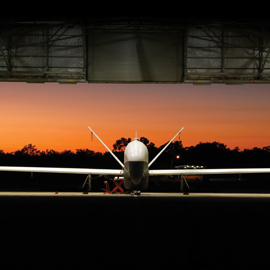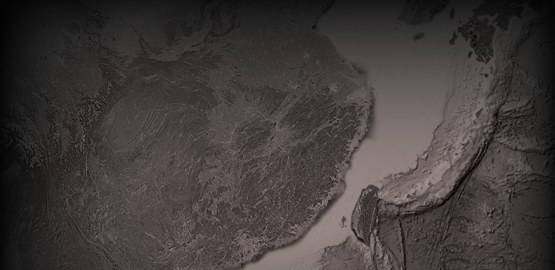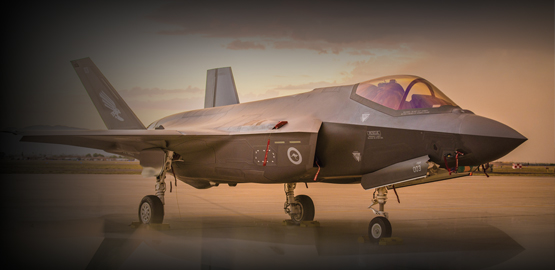
Over the past several years, the prospect of a terrorist group armed with a nuclear weapon has frequently been cited as a genuine and overriding threat to the security of the United States. Although the likelihood of a nuclear terrorist attack may be relatively low, the consequences of such an attack would obviously be enormous. There is, therefore, widespread agreement regarding the severity of this threat. Despite this consensus, a number of important questions remain open to debate: How real is the risk that a terrorist group could acquire or construct a functional nuclear device, and how might it attempt to do so? Which group poses the greatest threat in this regard, how has that threat changed over time, and is it currently growing or abating? What existing and prospective measures will prove most effective in preventing terrorists from obtaining a nuclear weapon, stopping them from delivering and detonating a weapon if prevention fails, and responding both at home and abroad in the event that an attack succeeds? The purpose of this report is to examine these critical issues.
Sources of the Nuclear Terrorist Threat
There are two major dimensions of the nuclear terrorist threat: the “supply” side of nuclear proliferation and the “demand” side of violent Islamist extremism. Over the past decade, longstanding concerns over proliferation have become increasingly acute in light of a number of worrisome developments, including the status of India and Pakistan as overt nuclear weapon states, North Korea’s test of a nuclear weapon, the international community’s failure to restrain Iran’s nuclear ambitions, and the fear that an Iranian nuclear weapons program could spark further proliferation throughout the Middle East. Ultimately, while existing nuclear arsenals and stockpiles of fissile material represent the most immediate concern, the spread of nuclear weapons and material has increased the probability that terrorists might be able to acquire or construct a nuclear device. At the same time that nuclear proliferation has become a growing concern, terrorism has also been elevated from a secondary to a primary threat to US security because of the emergence of groups that have few inhibitions on inflicting mass casualties by means of chemical, biological, and even nuclear weapons. Today, for example, the threat of nuclear terrorism is primarily associated with Osama bin Laden and his followers, who have not only pursued these weapons for some time, but have expressed their willingness to use them against their enemies.
Since the US invasion of Afghanistan in 2001, however, al Qaeda has lost a key sanctuary and much of its original senior leadership. Does it still hope to acquire and use weapons of mass destruction? Is it capable of obtaining or building a nuclear weapon? The answer to the first question appears to be “yes.” Publicly available information leaves little doubt that the group’s intentions remain unchanged. Nevertheless, al Qaeda appears to be much less capable of conducting a major attack against the United States, and especially a catastrophic attack using a nuclear weapon, than it was when it had a base of operations in Afghanistan. After the downfall of the Taliban regime, al Qaeda evolved into an increasingly decentralized organization. Moreover, as the influence and capabilities of its central leadership have waned, the source of the terrorist threat has shifted toward regional groups affiliated with al Qaeda and homegrown extremists inspired by it, neither of which are likely to possess the knowledge, skills, resources, or discipline necessary to plan and successfully carry out a nuclear attack. Unfortunately, numerous accounts suggest that al Qaeda’s core leadership is regaining its strength, reasserting and even expanding control over its far-flung network of allies and sympathizers, and reestablishing its ability to organize and execute major attacks, developments that would not be possible without the sanctuary it has established in remote areas of Pakistan. To the extent that this sanctuary allows al Qaeda’s leadership to plan future operations, the likelihood that the group might be able to conduct a catastrophic attack at some point in the future appears to be increasing once again.
An analysis of the supply and demand sides of the nuclear terrorist threat suggests two major conclusions. First, limiting and preferably stopping any further proliferation of nuclear weapons and the technology to produce nuclear material is and will remain an important goal. At present, this goal hinges largely on Iran — if Tehran does pursue and develop nuclear weapons, this could be the catalyst for a wave of proliferation in the Middle East. Yet stopping Iran from becoming a nuclear weapon state, while certainly desirable, may not be feasible through diplomacy, economic sanctions, or military action. The United States must, therefore, work to develop a comprehensive strategy to prevent further proliferation in the region if and when Iran does become a full-fledged nuclear power. Second, because there is a very strong probability that any credible plot to conduct a nuclear terrorist attack will originate with al Qaeda’s central leadership, a critical component of a broader strategy to prevent such an attack will involve measures directed at weakening al Qaeda’s leaders and eliminating — or at the very least restricting — their sanctuary in Pakistan.
Terrorist Acquisition of Nuclear Weapons: How, and How Likely?
If a terrorist group like al Qaeda was determined to “go nuclear,” how might it attempt to do so and what obstacles would it face? There are four main alternatives that prospective nuclear terrorists might pursue. First, terrorists could attempt to manufacture the fissile material needed to fuel a nuclear weapon (either highly enriched uranium or plutonium) and then use that material to construct a nuclear device. Of all the scenarios, this is by far the most ambitious, most difficult, and least likely. Producing fissile material is both the most crucial and the most challenging aspect of developing nuclear weapons, and is the step that has in the past prevented aspiring nuclear powers such as Libya and Iraq from becoming nuclear-weapon states. Thus, the knowledge, infrastructure, and finances needed to undertake this step with any realistic prospect of success very likely outstrip the resources that even a well-funded terrorist group might possess.
A second possibility is that a terrorist group might seek out a state sponsor, in particular a rogue nation that already possessed nuclear weapons and might provide the group with this capability. While the direct transfer of a nuclear weapon would certainly be the easiest route from a terrorist group’s perspective, several factors suggest that it is also highly unlikely. First, nuclear weapons are an extraordinarily valuable commodity that any state would be reluctant to part with. Second, any state that deliberately provided a terrorist group with a nuclear weapon would run the risk of being discovered and suffering the consequences. Third, it is also unlikely that a regime would willingly entrust a terrorist group with such a powerful weapon, since there would be no way to ensure that the group would carry out an attack against the intended target rather than another state or even the sponsoring regime itself.
A third possibility is the theft of an intact nuclear weapon, although this would hardly be an easy task. Most nuclear weapons are heavily guarded, and, even if terrorists did manage to acquire a weapon, they would still have to overcome any security features that render a weapon inoperable without the proper arming codes. Despite these factors, fears of “loose” nuclear weapons persist and are warranted, especially in the cases of Russia and Pakistan. For example, while efforts to help the Russian government reduce, consolidate, and secure its nuclear arsenal have been underway for more than a decade, the sheer size of that arsenal, the incomplete accounting of Russia’s weapon stockpiles, and limited or problematic safety measures at its nuclear facilities have contributed to lingering questions over Moscow’s ability to safeguard its weapons. In Pakistan, ongoing political instability and popular unrest, as well as suspicions that members of Pakistan’s military, intelligence, and scientific establishments continue to sympathize with and perhaps even support violent Islamist groups, have exacerbated fears that Pakistan’s nuclear weapons may be vulnerable.
Finally, there is the possibility that a group could purchase fissile material on the black market or steal it from a military or civilian facility and then use that material to construct an improvised nuclear device. In recent years, analysts have increasingly come to view this scenario as the most plausible route for terrorists seeking nuclear weapons, for two main reasons. First, large stockpiles of fissile material can be found throughout the world in military as well as civilian facilities, some of which are inadequately monitored and protected. Second, building a crude nuclear device once a sufficient amount of this material has been obtained, although not an easy task, is certainly within the realm of possibility. Here, the principal challenge for terrorists would involve the tradeoff between the quantity of fissile material required for a weapon and the type of weapon that could be built. That is to say, while a gun-type nuclear weapon would be relatively easy to build, it requires a significant amount of highly enriched uranium; conversely, far less uranium or a very small amount of plutonium would be needed to fuel an implosion weapon, but building this device would prove extremely difficult. Nevertheless, this threat remains particularly salient.
Developing a Response
At the most basic level, a comprehensive strategy for addressing the threat of nuclear terrorism should be structured around three core objectives: preventing terrorists from acquiring nuclear weapons or fissile material; stopping terrorists from delivering a nuclear weapon to their intended target should prevention fail; and being prepared to respond as quickly and effectively as possible, both at home and abroad, in the event that terrorists succeed in detonating a nuclear weapon inside the United States.
Keeping Terrorists from the Bomb
The first and most important way to avert a nuclear terrorist attack is to prevent terrorists from acquiring an intact weapon or from collecting a sufficient amount of fissile material to build a nuclear device. If terrorists do succeed in either of these endeavors, thwarting an attack will ultimately depend on locating any missing fissile material before a weapon can be assembled or intercepting a device before it can be delivered to the target and detonated. These are extremely challenging tasks that cannot be relied upon as a primary line of defense. Achieving this objective requires adopting a multi-dimensional approach that significantly decreases the prospects that terrorists will succeed at each major stage in their plot — obtaining a nuclear weapon, transporting the weapon to the target, and enjoying the benefits they anticipate will follow if they conduct a nuclear attack. Not only will such an approach increase the likelihood that prospective nuclear terrorists will fail in their efforts, it could as a result dissuade terrorists from seriously pursuing the nuclear option at all. There are three main areas that can contribute to dissuasion: delegitimizing the killing of civilians generally and the use of nuclear weapons specifically, reducing stockpiles of highly enriched uranium and plutonium and securing existing weapons and fissile material, and developing and deploying radiation monitors and other detection systems.
First, efforts must be made to foster the perception among terrorists that an act of nuclear terrorism will not help them to achieve their aims, but will instead prove counterproductive by causing sympathizers and potential supporters to turn away from them rather than rally to their side. If terrorists can be convinced that a successful catastrophic attack will ultimately backfire, they may grow reluctant to pursue this type of attack in favor of more “acceptable” forms of violence. Al Qaeda, for example, has recently displayed some concern over the increasingly widespread criticism of its violent tactics, particularly the murder of Muslim civilians. The US government should therefore work through intermediaries to publicize as widely as possible al Qaeda’s acts of violence and their immediate and longer-term effects on those who have suffered from them. It should also seek to support individuals and organizations throughout the Muslim world that not only eschew violence, but can publicly and credibly challenge al Qaeda by arguing that the large-scale killing of civilians and the use of nuclear weapons are immoral, religiously impermissible, and unlikely to help the situation of those whom al Qaeda claims to be fighting for.
Second, if terrorists cannot be persuaded to abandon the idea of nuclear terrorism, the next best thing would be to convince them that it is not a realistic option. Specifically, if a terrorist group concludes that it cannot acquire a nuclear weapon or enough fissile material to make one on its own, or that any attempt to do so would require enormous human and material resources and would still have only a very small chance of succeeding, it will likely devote most of those resources elsewhere. Continuing and, where possible, accelerating and expanding efforts to eliminate or secure potentially vulnerable nuclear weapons and material can therefore thwart determined terrorists from obtaining these items and dissuade prospective nuclear terrorists from attempting to do so in the first place. Moreover, as individual nations and international organizations work to secure loose weapons and material, a corresponding effort should also be made to publicize their successes and ensure that these actions are exploited for their dissuasive value.
Finally, detection systems can also play an important role in preventing a nuclear terrorist attack, not only by stopping a group from successfully transporting a nuclear weapon or material to its target, but also by dissuading terrorists from pursuing the nuclear option. In concert with the other recommendations discussed above, the deployment of radiation monitors and other detection systems can increase the prospect that potential nuclear terrorists will judge the possibility of success as too low to merit the effort required. It is important, however, to ensure that the presence of these systems influences terrorists’ calculations in the expected way — i.e., that they discourage terrorists from pursuing nuclear weapons and material as opposed to providing a roadmap for which routes, ports, or border crossings should be avoided. In addition to “red teaming” how terrorists might attempt to sneak a weapon or fissile material into the United States, analyses should be undertaken to determine how to convince terrorists that they will be unable to circumvent existing defenses, which may depend as much on publicizing (and possibly exaggerating) existing capabilities as developing new ones.
Stopping Terrorists from Delivering a Weapon
Although preventing terrorists from acquiring nuclear weapons and material is the best, safest, and most feasible way to avoid a catastrophic attack, prudence demands that the US Government be as well prepared as possible to locate and intercept a terrorist group that obtains these items before it can deliver a weapon to its intended target. Two areas in particular are likely to play a crucial role in these efforts: human intelligence and Special Operations Forces.
Given the inherent difficulty of detecting nuclear weapons and material, especially from any significant distance, locating and stopping terrorists who are in possession of these items may depend first and foremost on knowing where to look. Yet terrorist groups are often reluctant to use electronic forms of communication that could be monitored, and al Qaeda is notoriously difficult to penetrate through the cultivation of human sources. Therefore, resources might be better spent on the comparatively easier task of developing assets within the military and/or scientific establishments of nations that are the most probable sources of loose nuclear weapons and material, especially if individuals working in particularly high-risk facilities or more senior individuals who would be among the first to learn of any missing items can be identified in advance. If terrorists obtain stolen nuclear material or a nuclear weapon and have been located by human intelligence sources or some other means, Special Operations Forces will likely be tasked with interdicting and securing these items. Ideally, special operations personnel trained to render safe a nuclear device would be capable of responding quickly to a potential nuclear terrorist threat. In reality, however, the small number of personnel qualified for this mission, the high demand for those personnel in support of ongoing operations, the inherent uncertainty over where a nuclear terrorist threat might materialize, and the constraints imposed by geography all make the ideal response capability difficult to realize. Despite these problems, a number of measures could be taken to enable qualified personnel to respond to a nuclear terrorist threat in relatively short order, for example training select allies and partners in render-safe procedures, prepositioning necessary equipment overseas at bases or operating sites centrally located to various known smuggling routes and/or terrorist sanctuaries, and forward-deploying a small, dedicated response team in Europe or Central Asia.
Responding to an Attack
The aftermath of a terrorist attack would involve response efforts both at home and abroad. Response efforts at home would primarily focus on consequence management — limiting the damage caused by an attack. Improving consequence management capabilities will require continued investment in a number of areas, for example training first responders, prepositioning stockpiles of medication to treat radiation sickness, ensuring that various federal as well as state agencies have clearly defined and well understood areas of responsibility in the event of an attack, developing public communication strategies that can quickly and effectively instruct citizens on how to respond to an attack, and improving capabilities for decontaminating large areas that have been exposed to radiation.
Although the government’s immediate focus will be on mitigating the consequences of an attack, it will quickly shift its attention toward identifying those responsible and retaliating against the perpetrators. As a first step, scientists would be tasked with analyzing the radioactive debris from a nuclear explosion in order to gain as much information as possible on the weapon and material used, in order to determine their origin — a field that has received increased attention and funding in recent years. An effective nuclear attribution capability could also help to prevent an attack in the first place by ensuring that state sponsors would not be able to retain anonymity. In fact, a number of analysts have advocated a strategy of deterring nuclear terrorism by threatening potential state sponsors with retaliation if they are identified as the source of a nuclear weapon or material used in an attack.
Nuclear attribution is an important capability that deserves the increased attention and funding it has received. The US Government should continue to invest in this area, and may even want to publicly exaggerate its capabilities to encourage the belief that state sponsors will not be able to remain anonymous. At the same time, policymakers should also exercise caution when contemplating public declarations regarding who will be held responsible for an attack and what type of response will follow. Ambiguous warnings that do not explicitly call for a military reprisal could be useful by reinforcing the notion that governments may be culpable for the actions of a terrorist group. While declarations that overtly threaten a military reprisal will certainly capture a state’s attention, these threats may not prove credible or particularly effective in the most important cases, and could even risk doing more harm than good.



























